Industrial Continuous Inkjet Printers & CIJ Printing Systems
First introduced to the market in the early 1950s, continuous inkjet (CIJ) printers are one of today’s most used industrial marking options. Designed for use in industrial operations, CIJ printers can place barcodes, lot codes, expiration dates, and other essential markings directly onto products. CIJ printers accomplish this with a contact-free printing method that enables continuous printing on both porous and non-porous substrates, regardless of whether the surfaces are flat or curved.
Here at InkJet, Inc. we have been selling CIJ printers and developing CIJ-compatible inks for over 30 years. On this page, we will share our CIJ expertise by explaining what benefits CIJ printers offer, what applications they are well suited for, and finally, how industrial continuous inkjet printers work.
The Benefits of Continuous Inkjet Printing Systems
The continuous circulation process used by CIJ printers offers several benefits that are particularly suited to industrial applications. Most notably, CIJ printers offer:
High-Speed Printing
The continuous inkjet system is centered around creating a pressurized, continuous stream of ink. Accordingly, CIJ machines can print on substrates at faster rates than many other printers can achieve. For a quick comparison, the average CIJ printer can apply codes to products moving at 1,000 feet per minute, while thermal inkjet (TIJ) printers are generally limited to around 300 feet per minute. While some TIJ printers can print at comparable speeds to CIJ printers, they are not suited to the 24/7 continuous operation that CIJ printers are designed for.
Reliable Coding
CIJ printers are most frequently used to place markings such as lot codes, batch numbers, and expiration dates on products. These markings help ensure traceability, prevent material counterfeiting, and are often required by distribution channels. Failure to apply clearly legible codes can result in fines from retailers, and in certain cases, place manufacturers in violation of federal and/or state laws.
To avoid these issues, companies must ensure that their products are properly marked following retailer requirements and governmental regulations. CIJ printers can reliably deliver legible codes day after day even when under the pressure of fast, continuous operation. However, as with all industrial machinery, some maintenance is required to keep things running smoothly.
Simple Maintenance
CIJ printers have very few moving parts, making most issues easy to fix. Common problems are related to low-quality ink, clogged filters, or blocked ink flows, all of which can be avoided with simple routine maintenance.
Environmental Resistance
The operation principle and hearty construction of CIJ printers make them resistant to traditionally troublesome environmental factors. As opposed to other printer types, continuous inkjet printers do not apply heat to ink and are therefore more resistant to higher production temperatures. Many CIJ printers offer operating ranges from 40-100+° F. CIJ models like the DuraCode are built from modular stainless steel with an IP55 designation, further fortifying them against environmental issues such as dust and some humidity.
Plenty of Ink Choices and Versatile Applications
CIJ printers are compatible with a wide range of ink choices, making them suitable for a large number of substrates, both porous and non-porous. The contact-free printing method used by CIJ printers also enables printing on flat and curved surfaces. As a result, CIJ printers can print on a variety of substrates, including:
-
Aluminum cans
-
Paperboard cartons and boxes
For more specialty applications, CIJ printers can also utilize the following inks:
-
High-temperature ink
-
Non-transfer ink
-
Soft-pigmented ink
-
Hard-pigmented ink
-
Alcohol-resistant ink
-
Thermochromic ink
-
UV-readable ink
Industrial Continuous Inkjet Printer Applications
_______
The versatile and reliable nature of continuous inkjet printing systems makes them popular across a number of industries. Most prominently, CIJ printers are used to apply codes in the following fields:
FOOD PACKAGING
Food Packaging Flexible bags, paperboard cartons, metal cans, and rigid cases are just some of the many ways that food producers package their products for sale. The availability of different CIJ-compatible ink formulations allows those in the food industry to accurately label their products and avoid the harmful effects of ink migration.
BEVERAGE CANNING AND BOTTLING
Beverage Canning and Bottling: Similar to food products, canned and bottled beverages must display lot codes, barcodes, and expiration dates to comply with retailer requirements and regulations. Continuous inkjet printers are commonly used to apply these markings, as the 1-3 inch printing distance enabled by the CIJ printhead accommodates the packaging’s curved surface.
PERSONAL CARE, COSMETICS & PHARMA
Personal Care Products, Cosmetic Goods, and Pharmaceutical Packaging: Shampoos, hand sanitizer, feminine hygiene products, makeup, and topical ointments are just some of the items that fall under the personal care products umbrella. Many of these products are not only subject to the Fair Packaging and Labeling Act that applies to all consumer goods but also qualify as over-the-counter (OTC) pharmaceuticals, meaning they need to display a monograph required by the FDA. Products that require an FDA monograph include acne creams, antifungal sprays, antiperspirants, sunscreens, and more. Monograph elements, such as expiration dates and control numbers, are often applied by CIJ printers that are equipped with 50-micron nozzles. The smaller nozzle size allows the printer to legibly fit these codes on the limited bottle space. Prescription medicine manufacturers similarly use CIJ printers to satisfy the FDA’s drug labeling guidelines.
WIRE AND CABLE
Wire and Cable Production: Wires and cables are generally produced on lines moving hundreds of feet per minute. To meet these speeds, wire/cable producers require the uninterrupted marking capabilities of industrial continuous inkjet printers. The unique layout of CIJ printers also enables filter and fluid changes without work stoppage, allowing users to maximize uptime.
PLASTIC AND METAL EXTRUSIONS
Plastic and Metal Extrusions: Like wires and cables, extrusions made of plastic and metal are created on fast-moving production lines housed in environmentally challenging facilities. Pipes are the most common item produced by extrusion operations, and they are often coded with batch numbers or barcodes to enable traceability, convey production data, and prevent counterfeiting. CIJ printers ensure that these codes are applied legibly and in time with fast production speeds. Extrusion production lines can equip CIJ printers with 60/70-micron nozzles that print codes in bold, highly visible fonts—ideal for materials with rough-textured surfaces like metal.
How Continuous Inkjet Printers Work
_____
CIJ printers are designed for continuous 24/7 operation on industrial assembly lines, including those moving at speeds of over 1,000 feet per minute. The high-speed coding of CIJ printers is enabled by a continuous ink flow within the machine.
To examine how this operation is achieved, we will look at the different parts of a CIJ printer and examine how they work together for uninterrupted coding.
CIJ Inner Construction and the Circulation Principle

While the inner construction of CIJ printers will all slightly vary based on the model, the basic structural elements are constant and can be broken down into two categories: the core (sometimes referred to as the ink module) and the printhead. A graphic representation of these two structures is posted above. Below, we will examine how these two components work together to facilitate the continuous inkjet circulation principle.
The Printing Process
The core is where circulation begins. Within the core is a series of valves and pumps that pressurize the ink, moving it towards the printhead by way of a tube or umbilical. The core area consists of:
1. Two Chipped Bottles: These two bottles (the white containers shown in the DuraCode to the right) supply the ink that will be used to print on the substrates. One cartridge contains the ink itself, while the other contains solvent or make-up. The “chip” portion refers to a small printed circuit board used to make sure the correct ink replacement is supplied to the printer.
2. Main Reservoir: Here, the two chipped bottles combine with one another to form a printable ink mixture.
3. Pressurizing Pump: Positioned adjacent to the main reservoir, the pump pressurizes the ink mixture to feed it toward the printhead.
4. Decompression Valve: This is the final element in the controller. The decompression valve adjusts ink pressure before the mixture arrives at the printhead.
Once the ink stream travels past the decompression valve, it arrives at the printhead. At the printhead, the ink stream is oscillated, electrically charged, and precisely propelled toward the substrate. These functions are enabled by the following printhead parts:
5. Piezoelectric Element: The piezoelectric element oscillates the ink stream with vibration, causing the stream to form droplets.
6. Nozzle: The droplets arrive at the nozzle where they are propelled toward the substrate.
7. Charging Electrode Plate: On the way to the substrate from the nozzle, the ink droplets are given an electric charge by the electrode. The charge enables the droplets to be directed by the next item.
8. Deflecting Electrode Plate: This second electrode plate creates a magnetic field that differentiates between which droplets should be propelled toward the substrate and which droplets should be rerouted back toward the main tank.
9. Gutter: The gutter collects the unneeded ink particles and reroutes them back to the tank, ensuring that the ink flow is continuous.
Find an Industrial Continuous Inkjet Printer That Works for You
Continuous inkjet printers are versatile workhorse machines that can deliver uninterrupted coding day after day. Whether you’re working with glass bottles, flexible food packaging, or metal pipes, the high-speed printing capabilities of a CIJ printer can maximize your operation’s uptime and coding accuracy. However, with how many CIJ models and ink formulations that exist on the market today, it can be difficult to determine what printer and ink combination will work best for your needs. If you’re facing this dilemma, the expert team here at InkJet, Inc. can help.
With over three decades of experience in ink development and printer sales, we have a detailed understanding of the challenges facing different industries. We share this knowledge with each client and can direct you to printing solutions that accommodate every operational need. To obtain a continuous inkjet printing system that works for you, contact us today, tell us about your operation, and we can find the perfect match for you.
For more information on industrial continuous inkjet printers, or any other questions related to printers and ink, contact InkJet, Inc. online or by phone at (800) 280-3245.



